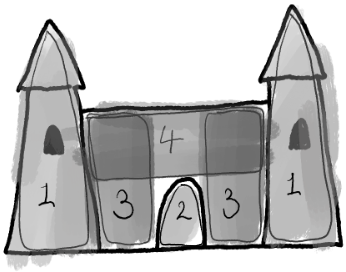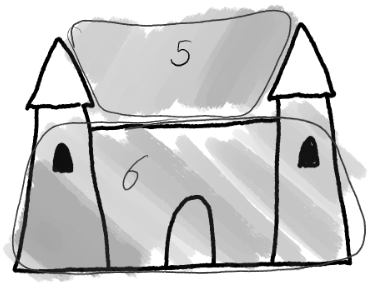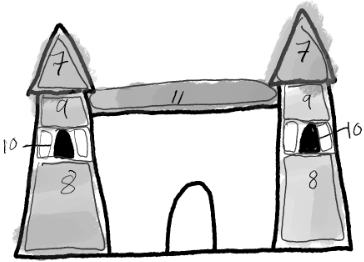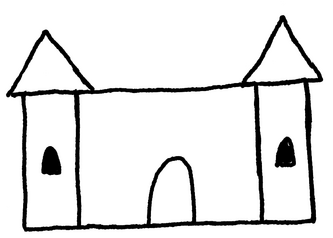Property 2 — Strong Centres
Strong Centres is introduced in
All designs need an identity, a way to say what constitutes the design and what does not. Where the design ends and the rest of the world begins. But not all these beginnings and endings need to be definite. Boundaries and borders also delineate the form, but identifiable elements and parts of a whole design do not need literal lines around them.
When a design seems to have a weak form, it could be the centres are not as strong as they need to be. Centres are always already present in a form, so this is a property which is not introduced as a new element but one where the strength of the centres are developed. Occasionally, recognisable forms are waiting in the wings but cannot emerge without support from neighbouring elements. But defining weak centres is hard, so I shall describe the strong ones first.
The property of strong centres is not so much a resolution of forces but the basis upon which everything else rests. It’s the atom of wholesome forms. Except, it’s not atomic because atomic means indivisible, and strong centres are frequently divided or overlapping as you work your way down the hierarchy.
 The identifiable parts of an object often overlap.
The identifiable parts of an object often overlap.
The overall compound comprises a set of cohesive, identifiable elements containing recursively more cohesive elements. But, just as people belong to many different groups, so can some design elements manifest as parts of various centres in the same compound. These centres are the discernible elements. If you can see the shape somehow, even by negative space, then it can be a centre.
 The parts of an object can be compound, formed from the negative space,
The parts of an object can be compound, formed from the negative space,
or simply an emergent shape of smaller details.
A strong composite form has to be a harmonious collection of centres. Each sub-form should be a complete and unfolded element in its own right. Strong centres overlap, and the overlapping is itself often a centre, but when things intrude rather than support, they break down. If you can’t effortlessly draw lines around things and characterise them as separate elements, then the form might not have strong centres. In a good design, everything should be a centre, and a strong one at that.
 Each level of scale contains other strong centres.
Each level of scale contains other strong centres.
Strong centres are those reinforced by the other centres around them, supported by multiple aspects simultaneously where possible. They are part of a sequence of things, a good relative size, part of a border, or the vital quietness offsetting the noise of a neighbouring compound. Strong centres, whatever they are, are secure, identifiable, and stable.
You can use weaker centres to emphasise a strong centre, but weaker does not mean weak. Weak elements might be unbalanced or skewed, look different or appear original for no obvious reason, or some other weaknesses of relationship with their neighbours. Some centres can be allowed to be weaker because they are the elements at the edge where they have to interact directly with elements from a different outer compound. Others might be strong locally but perhaps have been asked to give up some strength as part of a roughening process to relax a more critical centre.
Strong centres are reinforced by other centres, from within or without. Weak centres are those that don’t have good relationships or are ill-shaped. Now, let’s look at an example of weaker centres.
 Many centres, but most are weak or not supportive of their neighbours.
Many centres, but most are weak or not supportive of their neighbours.
Many centres in this design are weak or weakened by their neighbours. I adjusted three aspects to show how small the changes need to be.
- The towers with their straight sides don’t lend any weight to the structure, so they weaken the whole castle.
- The straight sides also make the structure look like it’s failed to be symmetrical rather than succeeded in having a bookended design.
- The placement of the windows precisely halfway up the towers makes a false symmetry where none is required and creates equal space above and below, but it’s not completed with an equal-sized window, so it looks awkward.
- The caps on the towers touch the top of the main body, not only detracting from their purpose in the design, but also weakening the main body by giving it two more sides without literal corners to define them.
- With the caps touching the top of the main body, the space beneath the outside edge doesn’t feel consistent with the interior.
If you can detect these weaknesses, you can strengthen the complete design by improving the smaller centres. Each act need only be small to create a significant effect. I detected five failures affecting over seven centres, all from only intentionally damaging three elements. What do you see as weak in my attempt at a strong-centred design? What latent stronger centres can you bring out of the castle image?